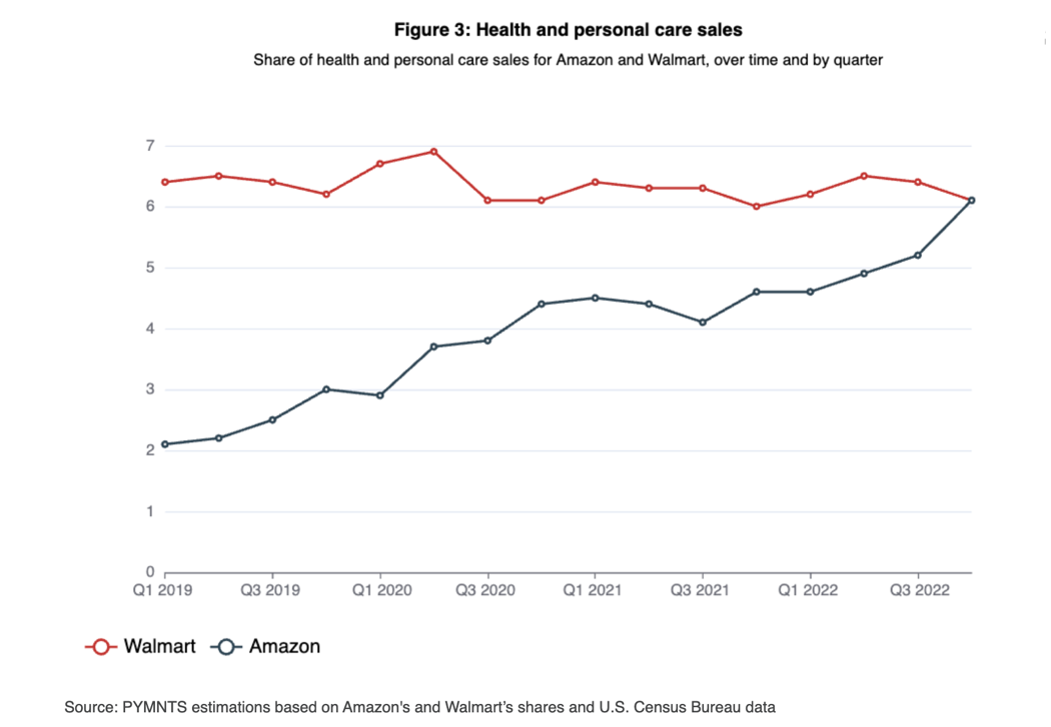
Amazon is closing in on one of Walmart’s traditional areas of dominance — consumer spending on personal health items — as the two titans continue their contentious dance.
As is seen in PYMNTS’ ongoing tracking of the battle for share in key categories between the two companies, one the epitome of brick-and-mortar strength, the other the embodiment of eCommerce power, we find Amazon’s up-and-to-the-right growth curve hitting and likely passing that of Walmart.

We recently reported that “while four years ago Walmart accounted for 6.4% of consumer spending and Amazon barely cleared 2%, the eCommerce giant has come on strong and almost tripled its share in this time. Amazon and Walmart have hit a stalemate, both holding down a 6.1% share of health and personal care spending in Q4 2022.”
Walmart finished ahead in gross sales for 2022, but the difference is extremely small — less than $200 million — and as the incumbent has none of Amazon’s momentum, it seems likely that Amazon will surpass Walmart in these sales in 2023.
Walmart is punching back through initiatives like its launch of its Clean Beauty line featuring items that are made without a long list of chemicals and artificial ingredients, based on customer, supplier, and expert feedback and state and federal regulations.
Additionally, Walmart will continue appealing to price-conscious shoppers, as 80% of these products will sell for less than $10. Meanwhile, Amazon is countering with a luxury push, launching a collection “of high-end beauty brands for its Luxury Stores concept, which targets wealthy consumers in Europe,” PYMNTS reported, with products including serums selling for $300 and body creams for $100, displaying Amazon’s attempts to build its footprint in prestige beauty.
As Walmart positions itself more decidedly as the dominant power in omnichannel retailing, as was explained at length at its recent investor community day, eCommerce continues chipping away at Walmart’s historic lead in categories like beauty and wellness, and elsewhere.
It’s part of the unstoppable advance of e-commerce. PYMNTS Q4 2022 research found that “total consumer spending on retail products was more than $6 trillion in the 12 months before October 2022, with eCommerce representing $1.3 trillion in annual sales. Based on a combined analysis of data from PYMNTS’ Quarterly Payments Survey and the Bureau of Economic Analysis (BEA), eCommerce represents 21.7% of annual retail sales in Q4 2022, up from 21.3% in Q3.1”
Read: Q1 Earnings to Test Amazon’s Grip on Key Walmart Categories